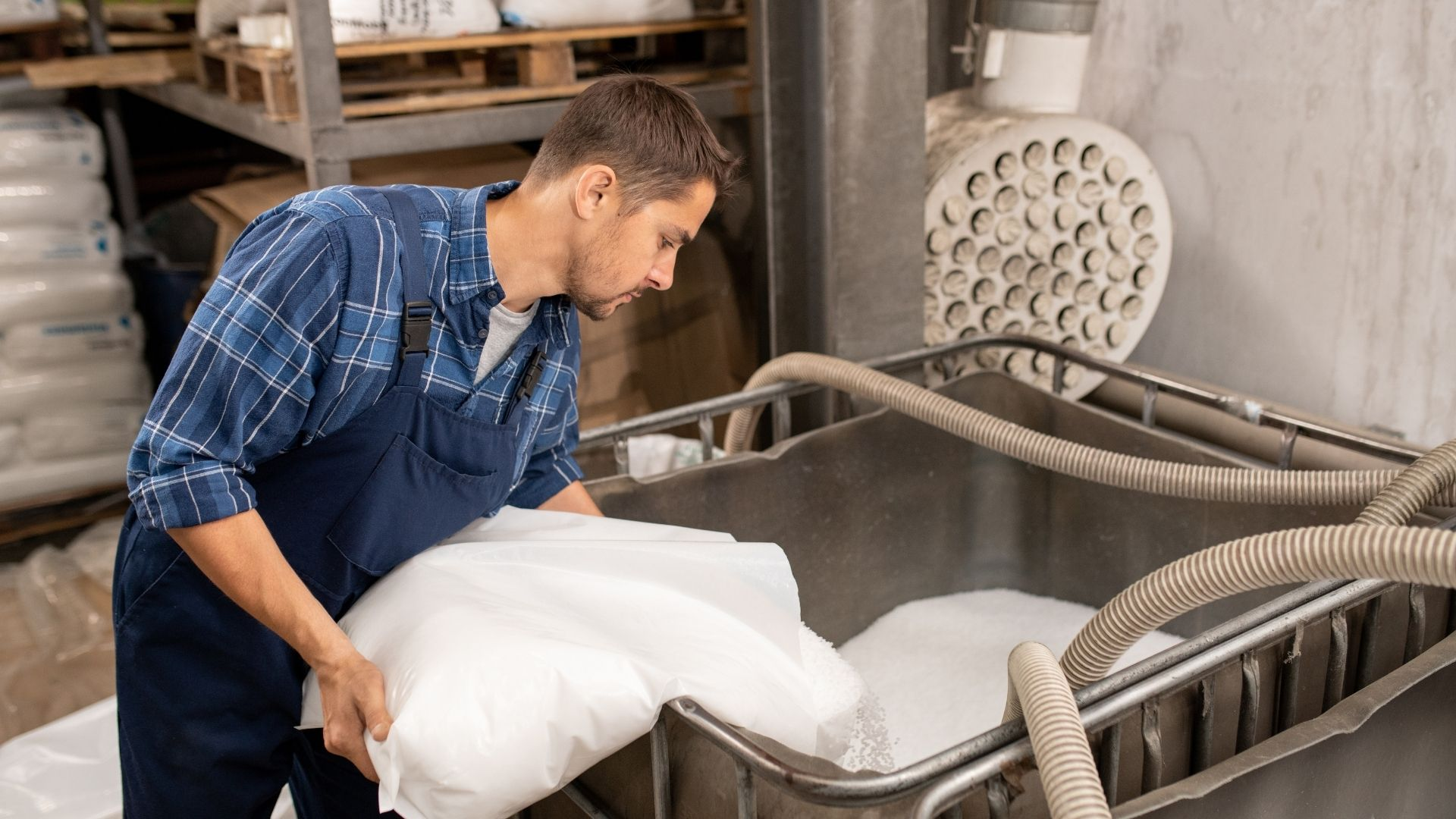What are thermoplastics and what types exist?

Thermoplastics, as their name indicates, are a type of plastic formed by polymers linked by intermolecular interactions to form linear or branched structures. This type of plastic, when subjected to high temperatures, becomes a viscous and malleable material. This change of state, allows the elaboration of an infinite number of shapes, starting to solidify with its refrigeration.
This feature allows thermoplastics to be increasingly present in our lives, as they can adopt any shape we can imagine and, in parallel, carry out the modeling process on several occasions, favoring the circular economy and the environment. However, it is important to consider their thermal history because, as the process of heating and cooling the material to obtain new shapes is respected, its physical properties gradually change and its molecular interactions weaken.
Now that we've already clarified what a thermoplastic is, what types are there?
Below, we show the most used in the thermoplastic injection molding sector:
- PE (polyethylene)
Chemically is the simplest polymer, is a material that works very well at low temperatures and is easy to weld. It is extremely versatile, which, along with its low price and easy manufacture, makes it one of the most widely used plastics in the world. This thermoplastic is widely used in the manufacture of all kinds of bags, airtight containers, irrigation pipes, kitchen foils and much more. - PP (polypropylene)
It is a transparent, lightweight material that does not absorb water and is very resistant to stress cracking. Examples of applications are textile fibers, couplings, shipping containers, mats, ropes, packaging and furniture. - PVC (Polyvinylchlorid)
It is a very versatile plastic, it is resistant to adversities such as wear, chemical influences, climate and fire. It is used in the paper industry and in the manufacture of packaging for food, credit cards, furniture, toys and clothing. - LDPE (low density polyethylene) and HDPE (high density polyethylene)
This is one of the most used plastics and not by chance, it is very stable, versatile, cheap and has excellent insulating properties, it is easy to process and can come into contact with food. This thermoplastic can be found in bottles, shipping containers and containers, packaging and toys. - PS (polystyrene)
Polystyrene is a very versatile material and used in a large and diverse amount of products, being one of the most used materials in the world. Due to its properties, it is widely used for products such as food packaging or laboratory equipment.
There are four main types:- Crystal PS;
- HIPS;
- EPS;
- Extruded PS.
- Crystal PS;
- PMMA (polymethyl methacrylate)
This material, classified as engineering plastic, is used in several areas such as the automobile industry, cosmetics, civil construction, optics, etc. Due to its high scratch resistance, aesthetics and transparent color, it is considered a substitute for glass. It is weather and ultraviolet resistant and an excellent material for acoustic and thermal insulation, but it is not self-extinguishing. - PB (polybutylene)
Mainly used for the manufacture of plumbing and heating pipes, this material, thanks to its flexibility and tensile strength for long periods at high temperatures, is very suitable for the perfect handling of hot and cold water under pressure. - PET (polyethylene terephthalate)
The material is mainly used for beverage and textile packaging. Lightweight, transparent, crystal clear, waterproof, high resistance to bending, low moisture absorption and approved for contact with food. However, this thermoplastic presents some problems such as the fact that it is not biodegradable, it can be recycled, but at the expense of the fact that its viscosity decreases with increasing heat generation. - PC (Polycarbonate)
This polymer is widely used today and belonging to the family of engineering plastics, is given the name of polycarbonate due to its composition from functional groups of carbonates. Easy to work and injection molding, it is a synthetic material endowed with excellent properties that make it resistant to chemicals, ultraviolet radiation, high temperatures, impacts and provide it with optical properties. - ABS (Acrylonitrile Butadiene Styrene)
It is an amorphous thermoplastic that is very resistant to shocks and is widely used in the automotive and domestic industries. One of its most important properties as an engineering plastic is its high tenacity, even at low temperatures. At the same time, it is hard, rigid, has low water absorption and acceptable chemical resistance. It is very resistant to abrasion and can be easily covered with metallic layers. One of the most popular uses is in LEGO bricks.

There is a whole world in relation to this subject, and for each material that we have described we could even distinguish several types or variants of it.
Similarly, there are more types of thermoplastics, less present in general, such as:
- HDPE - High Density Polyethylene;
- LLDPE - Low density linear polyethylene;
- ASA - Acrylonitrile styrene acrylate;
- PBT - Polybutylene terephthalate;
- PA - Polyamide;
- POM - Poly Methylene Oxide;
- SAN - Acrylonitrile and styrene resin;
- SB - Styrene butadiene;
- SEBS - Styrene-ethylene-butadiene-styrene.


